Brake Squeal Investigations Based on Acoustic Measurements Performed on the FIVE@ECL Experimental Test Bench
Abstract
:1. Introduction
2. Description of the Experimental FIVE@ECL Test Bench and Data Acquisition
- s: braking system at rest and the start of data acquisition;
- 0 s 5.3 s: Phase 1—no rotation;
- 5.3 s 9 s: Phase 2—increasing the rotation of the disc from 0 to 200 rpm (keeping the brake pressure at zero);
- 9 s s: Phase 3—system rotating at 200 rpm without brake pressure;
- 13.2 s 15.5 s: Phase 4—rise in brake pressure from 0 to 9 bars. This period corresponds to the pads and the disc coming into contact along with the emergence of friction-induced vibrations and squeal noise;
- 15.5 s 36 s: Phase 5—braking phase by keeping the brake pressure at nine bars and the disc rotation speed at 200 rpm;
- 36 s: Phase 6—brake pressure release.
3. Experimental Study of Squeal Noise
3.1. Preliminary Analysis
3.2. Characterisation of Squeal Frequencies
4. Acoustic Field Reconstruction
4.1. Methods for 3D Reconstruction
4.2. Reconstruction of Squeal Noise and Comparison with Experiments
4.3. 3D Reconstruction of Squeal Noise
- one section defined along the plane and located at m. These results correspond to the reconstruction of the acoustic noise field that is relatively distant from the experimental measurements of the antenna microphones;
- one section defined along the vertical plane and passing through the center of the disc. This provides a visualization of the acoustic propagation in the vertical plane over a distance of 0 to 4 m with respect to the direction normal to the plane of the brake disc (along z-axis);
- one section defined along the horizontal plane and passing through the center of the disc (i.e., orthogonal to the chosen vertical plane ). This offers a complementary representation to the previous visualization of the propagation of the acoustic field over a distance of 0 to 4 m.
5. Conclusions
Author Contributions
Funding
Institutional Review Board Statement
Informed Consent Statement
Data Availability Statement
Acknowledgments
Conflicts of Interest
References
- Papinniemi, A.; Lai, J.; Zhao, J.; Loader, L. Brake squeal: A literature review. Appl. Acoust. 2002, 63, 391–400. [Google Scholar] [CrossRef]
- Kindkaid, N.; O’Reilly, O.; Papadopoulos, P. Automative disc brake squeal. J. Sound Vib. 2003, 267, 105–166. [Google Scholar] [CrossRef]
- Ouyang, H.; Nack, W.; Yuan, Y.; Chen, F. Numerical analysis of automative disc brake squeal: A review. Int. J. Veh. Noise Vib. 2005, 1, 207–231. [Google Scholar] [CrossRef]
- Ibrahim, R. Friction-induced vibration, chatter, squeal, and chaos part 1: Mechanics of contact and friction. Appl. Mech. Rev. 1994, 47, 209–226. [Google Scholar] [CrossRef]
- Ibrahim, R. Friction-induced vibration, chatter, squeal, and chaos part 2: Dynamics and modeling. Appl. Mech. Rev. 1994, 47, 227–263. [Google Scholar] [CrossRef]
- Oberst, S.; Lai, J.C.S. Statistical analysis of brake squeal noise. J. Sound Vib. 2011, 330, 2978–2994. [Google Scholar] [CrossRef]
- Tison, T.; Massa, F.; Turpin, I.; Nunes, R.F. Improvement in the predictivity of squeal simulations: Uncertainty and robustness. J. Sound Vib. 2014, 333, 3394–3412. [Google Scholar] [CrossRef]
- Nobari, A.; Ouyang, H.; Bannister, P. Uncertainty quantification of squeal instability via surrogate modelling. Mech. Syst. Signal Process. 2015, 60–61, 887–908. [Google Scholar] [CrossRef]
- Renault, A.; Massa, F.; Lallemand, B.; Tison, T. Experimental investigations for uncertainty quantification in brake squeal analysis. J. Sound Vib. 2016, 367, 37–55. [Google Scholar] [CrossRef]
- Poletto, J.; Neis, P.; Ferreira, N.; Masotti, D.; Matozo, L. An experimental analysis of the methods for brake squeal quantification. Appl. Acoust. 2017, 122, 107–112. [Google Scholar] [CrossRef]
- Denimal, E.; Sinou, J.J.; Nacivet, S. Influence of structural modifications of automotive brake systems for squeal events with kriging meta-modelling method. J. Sound Vib. 2019, 463, 114938. [Google Scholar] [CrossRef]
- Chevillot, F.; Sinou, J.J.; Hardouin, N.; Jézéquel, L. Simulations and experiments of a nonlinear aircraft braking system with physical dispersion. J. Vib. Acoust. 2010, 132, 041010. [Google Scholar] [CrossRef]
- Sinou, J.J.; Dereure, O.; Mazet, G.B.; Thouverez, F.; Jézéquel, L. Friction Induced Vibration for an Aircraft Brake System. Part I: Experimental approach and Stability Analysis. Int. J. Mech. Sci. 2006, 48, 536–554. [Google Scholar] [CrossRef]
- Panier, S.; Dufrénoy, P.; Weichert, D. An experimental investigation of hot spots in railway disc brakes. Wear 2004, 256, 764–773. [Google Scholar] [CrossRef]
- Lorang, X.; Foy-Margiocchi, F.; Nguyen, Q.; Gautier, P. TGV disc brake squeal. J. Sound Vib. 2006, 293, 735–746. [Google Scholar] [CrossRef]
- Majcherczak, D.; Dufrénoy, P.; Berthier, Y. Tribological, thermal and mechanical coupling aspects of the dry sliding contact. Tribol. Int. 2007, 40, 834–843. [Google Scholar] [CrossRef]
- Sinou, J.J.; Loyer, A.; Chiello, O.; Mogenier, G.; Lorang, X.; Cocheteux, F.; Bellaj, S. A global strategy based on experiments and simulations for squeal prediction on industrial railway brakes. J. Sound Vib. 2013, 332, 5068–5085. [Google Scholar] [CrossRef]
- Massi, F.; Giannini, O.; Baillet, L. Brake squeal as dynamic instability: An experimental investigation. J. Acoust. Soc. Am. 2006, 120, 1388–1398. [Google Scholar] [CrossRef]
- Massi, F.; Baillet, L.; Giannini, O.; Sestieri, A. Brake squeal: Linear and nonlinear numerical approaches. Mech. Syst. Signal Process. 2007, 21, 2374–2393. [Google Scholar] [CrossRef]
- Akay, A.; Giannini, O.; Massi, F.; Sestieri, A. Disc brake squeal characterization through simplified test rigs. Mech. Syst. Signal Process. 2009, 23, 2590–2607. [Google Scholar] [CrossRef]
- Butlin, T.; Woodhouse, J. A systematic experimental study of squeal initiation. J. Sound Vib. 2011, 330, 5077–5095. [Google Scholar] [CrossRef]
- Kado, N.; Sato, N.; Tadokoro, C.; Skarolek, A.; Nakano, K. Effect of yaw angle misalignment on brake noise and brake time in a pad-on-disc-type apparatus with unidirectional compliance for pad support. Tribol. Int. 2014, 78, 4–46. [Google Scholar] [CrossRef]
- Butlin, T.; Woodhouse, J. Friction-induced vibration: Model development and comparison with large-scale experimental tests. J. Sound Vib. 2013, 332, 5302–5321. [Google Scholar] [CrossRef]
- Bonnay, K.; Magnier, V.; Brunel, J.; Dufrénoy, P.; Saxcé, G.D. Influence of geometry imperfections on squeal noise linked to mode lock-in. Int. J. Solids Struct. 2015, 75–76, 99–108. [Google Scholar] [CrossRef]
- Sinou, J.J.; Lenoir, D.; Besset, S.; Gillot, F. Squeal analysis based on the laboratory experimental bench “Friction-Induced Vibration and noisE at École Centrale de Lyon” (FIVEECL). Mech. Syst. Signal Process. 2019, 119, 561–588. [Google Scholar] [CrossRef]
- Lenoir, D.; Besset, S.; Sinou, J.J. Transient vibro-acoustic analysis of squeal events based on the experimental bench FIVE@ECL. Appl. Acoust. 2020, 165, 107286. [Google Scholar] [CrossRef]
- Sinou, J.J.; Besset, S.; Lenoir, D. Some unexpected thermal effects on squeal events observed on the experimental bench FIVE@ECL. Mech. Syst. Signal Process. 2021, 160, 107867. [Google Scholar] [CrossRef]
- Hendricx, W.; Garesci, F.; Pezzutto, A.; Van der Auweraer, H. Experimental and numerical modelling of friction induced noise in disc brakes. SAE Trans. 2002, 111, 1566–1571. [Google Scholar] [CrossRef]
- Flint, J.; Hald, J. Traveling Waves in Squealing Disc Brakes Measured with Acoustic Holography. Sae Tech. Pap. 2003. [Google Scholar] [CrossRef]
- Fieldhouse, J.; Newcomb, T. Double pulsed holography used to investigate noisy brakes. Opt. Lasers Eng. 1996, 25, 455–494. [Google Scholar] [CrossRef]
- Hald, J. Basic theory and properties of statistically optimized near-field acoustical holography. J. Acoust. Soc. Am. 2009, 125, 2105–2120. [Google Scholar] [CrossRef]
- Wang, Z.; Wu, S.F. Helmholtz equation-least-squares method for reconstructing the acoustic pressure field. J. Acoust. Soc. Am. 1997, 102, 2020. [Google Scholar] [CrossRef]
- Wu, S.F. On reconstruction of acoustic fields using the Helmholtz equation least squares method. J. Acoust. Soc. Am. 2000, 107, 2511. [Google Scholar] [CrossRef] [PubMed]
- Williams, E.G.; Maynard, J.D.; Skudrzyk, E.J. Sound source reconstruction using a microphone array. J. Acoust. Soc. Am. 1980, 68, 340. [Google Scholar] [CrossRef]
- Maynard, J.D.; Williams, E.G.; Lee, Y. Nearfield acoustic holography: I. Theory of generalized holography and the development of NAH. J. Acoust. Soc. Am. 1985, 78, 1395. [Google Scholar] [CrossRef]
- Saijyou, K.; Yoshikawa, S. Reduction methods of the reconstruction error for large-scale implementation of near-field acoustical holography. J. Acoust. Soc. Am. 2001, 110, 2007. [Google Scholar] [CrossRef] [PubMed]
- Gomes, J.; Hansen, P. A study on regularization parameter choice in Near-field Acoustical Holography. In Proceedings of the Acoustics’08, Paris, France, 30 June–4 July 2008; pp. 2875–2880. [Google Scholar] [CrossRef]
- Hald, J. Patch Near-field Acoustical Holography Using a New Statistically Optimal Method. In Proceedings of the PInter-Noise, Seogwipo, Republic of Korea, 25–28 August 2003. [Google Scholar] [CrossRef]
- Hald, J. Patch holography in cabin environments using a two-layer handheld array with an extended SONAH algorithm. In Proceedings of the Euronoise, Tampere, Finland, 30 May–1 June 2006. [Google Scholar] [CrossRef]
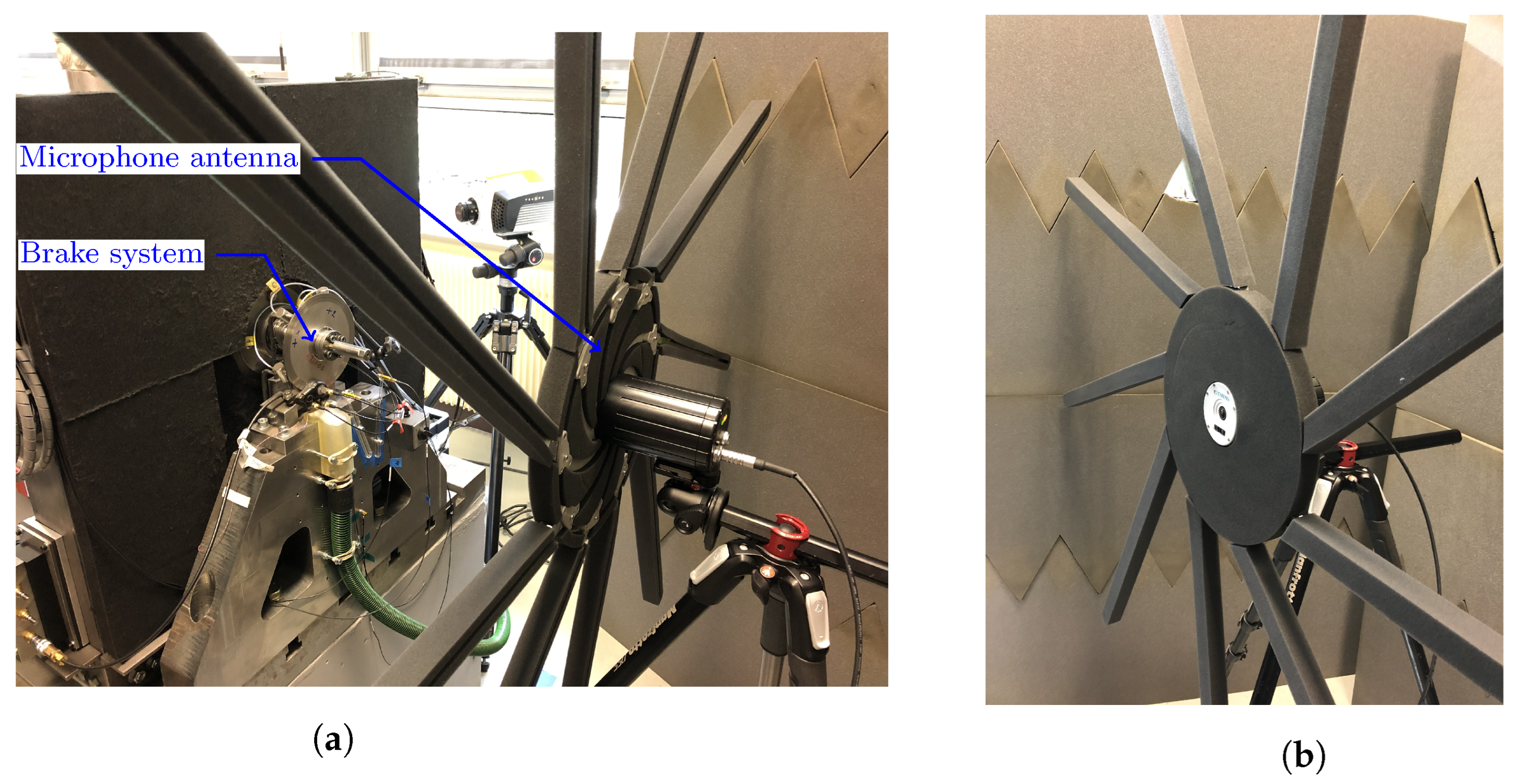
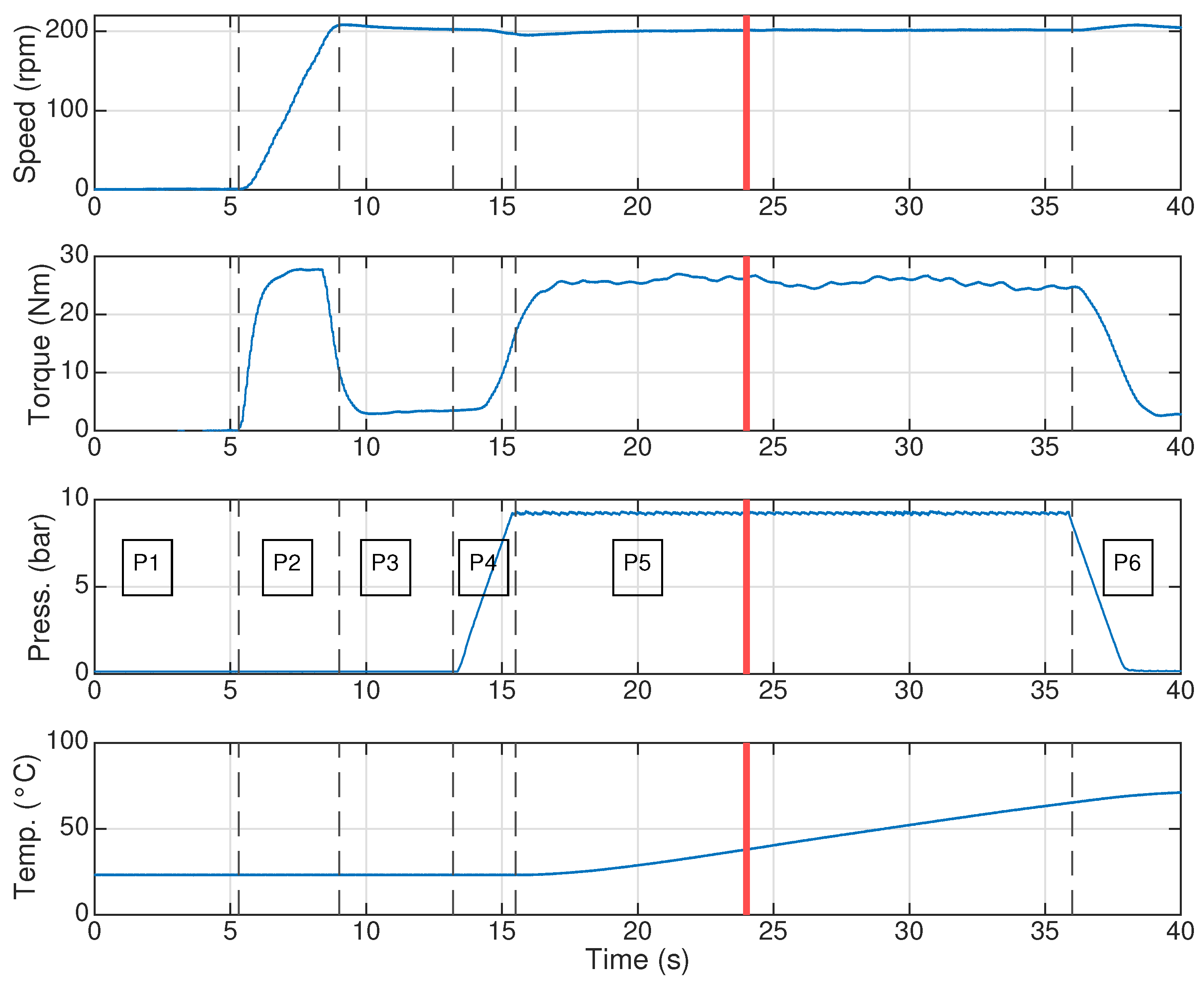
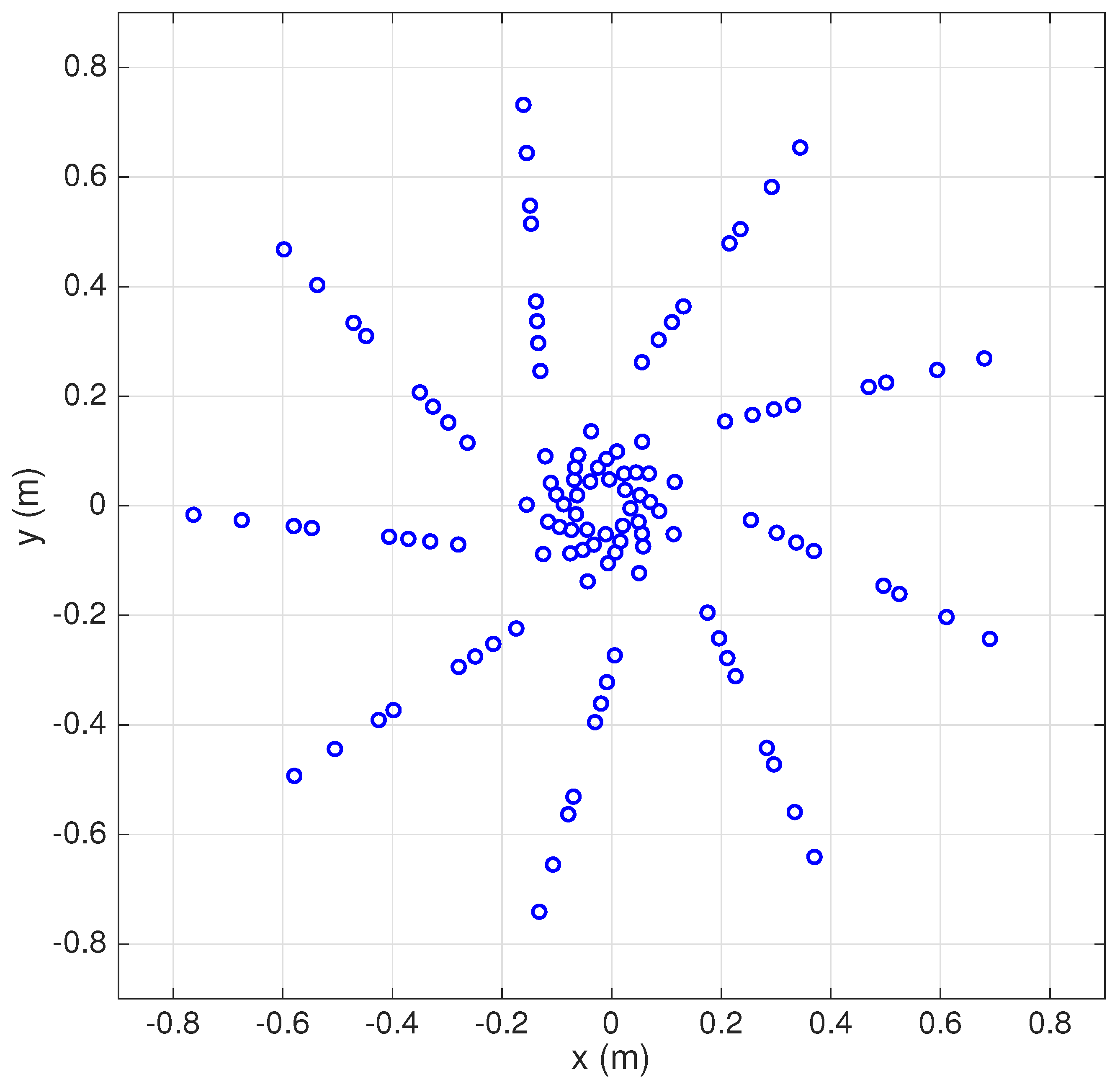
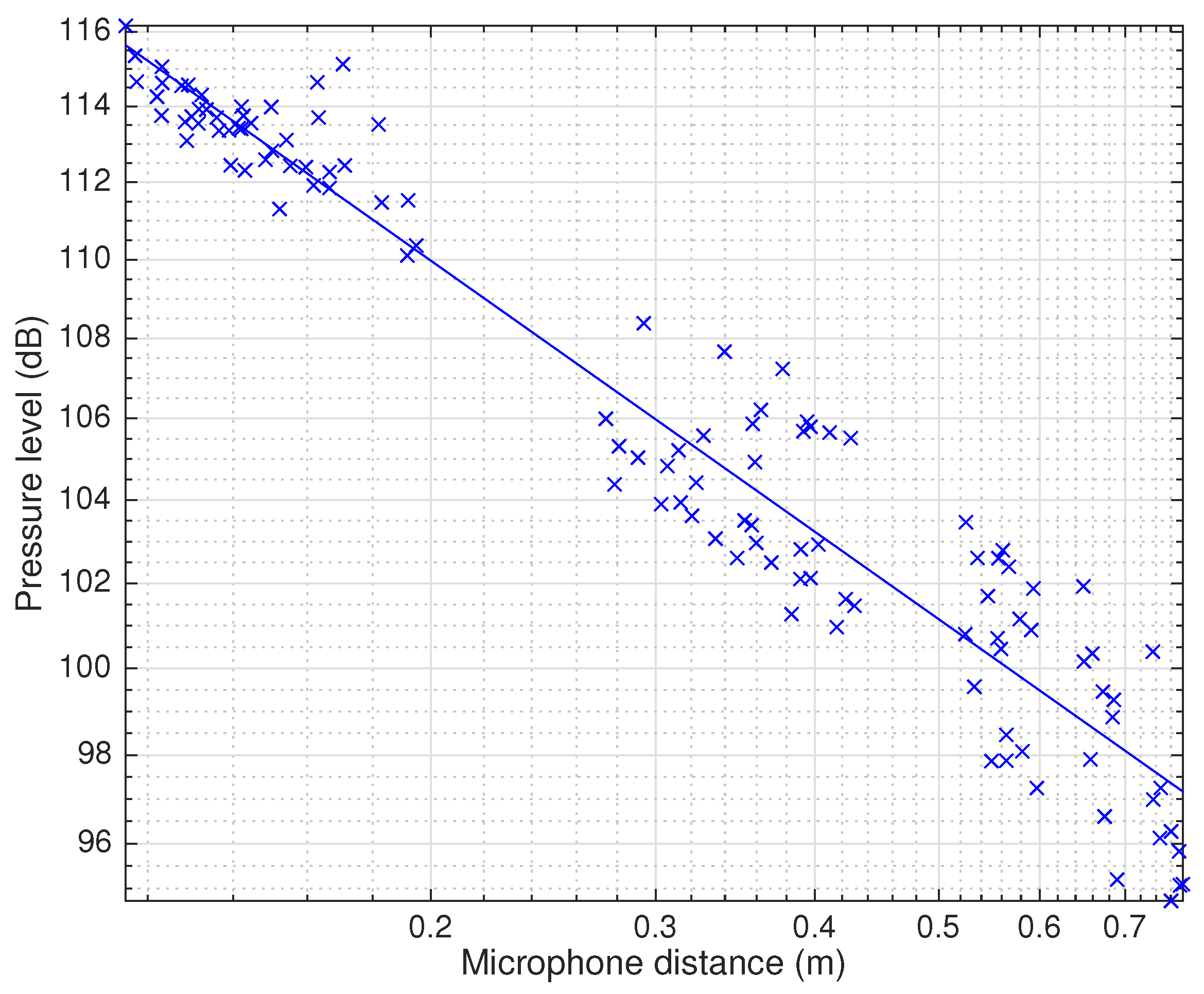

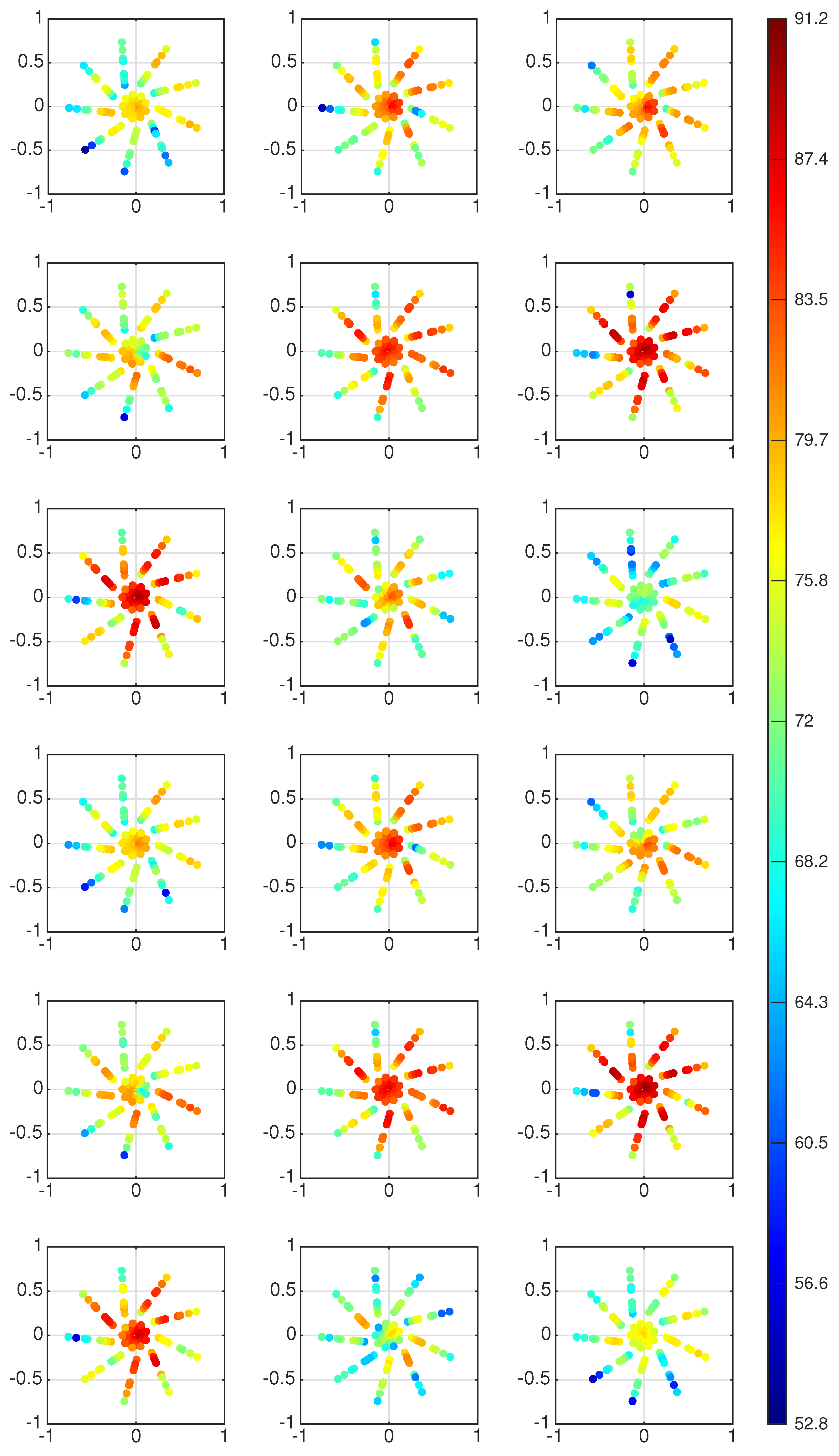

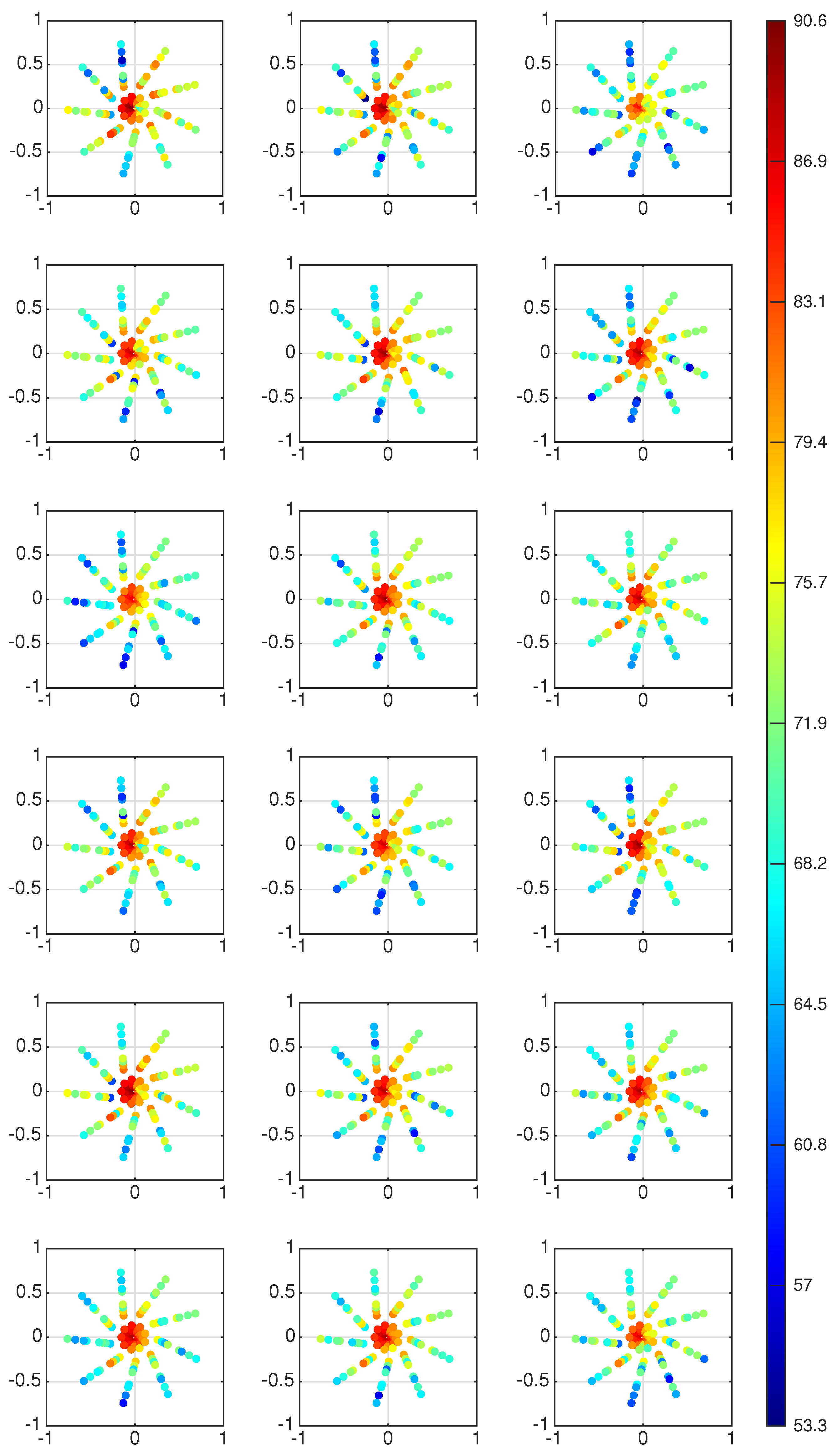
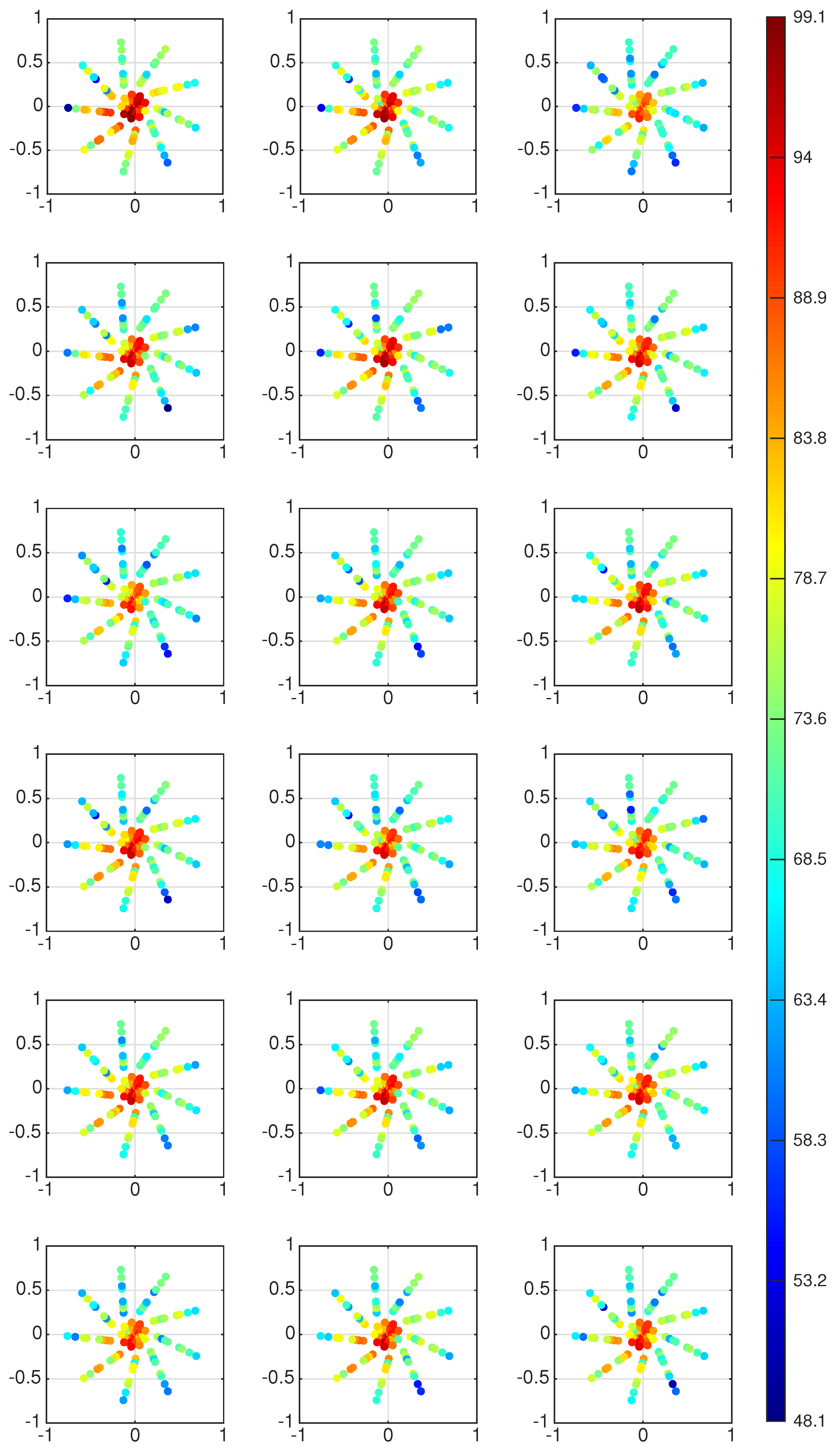

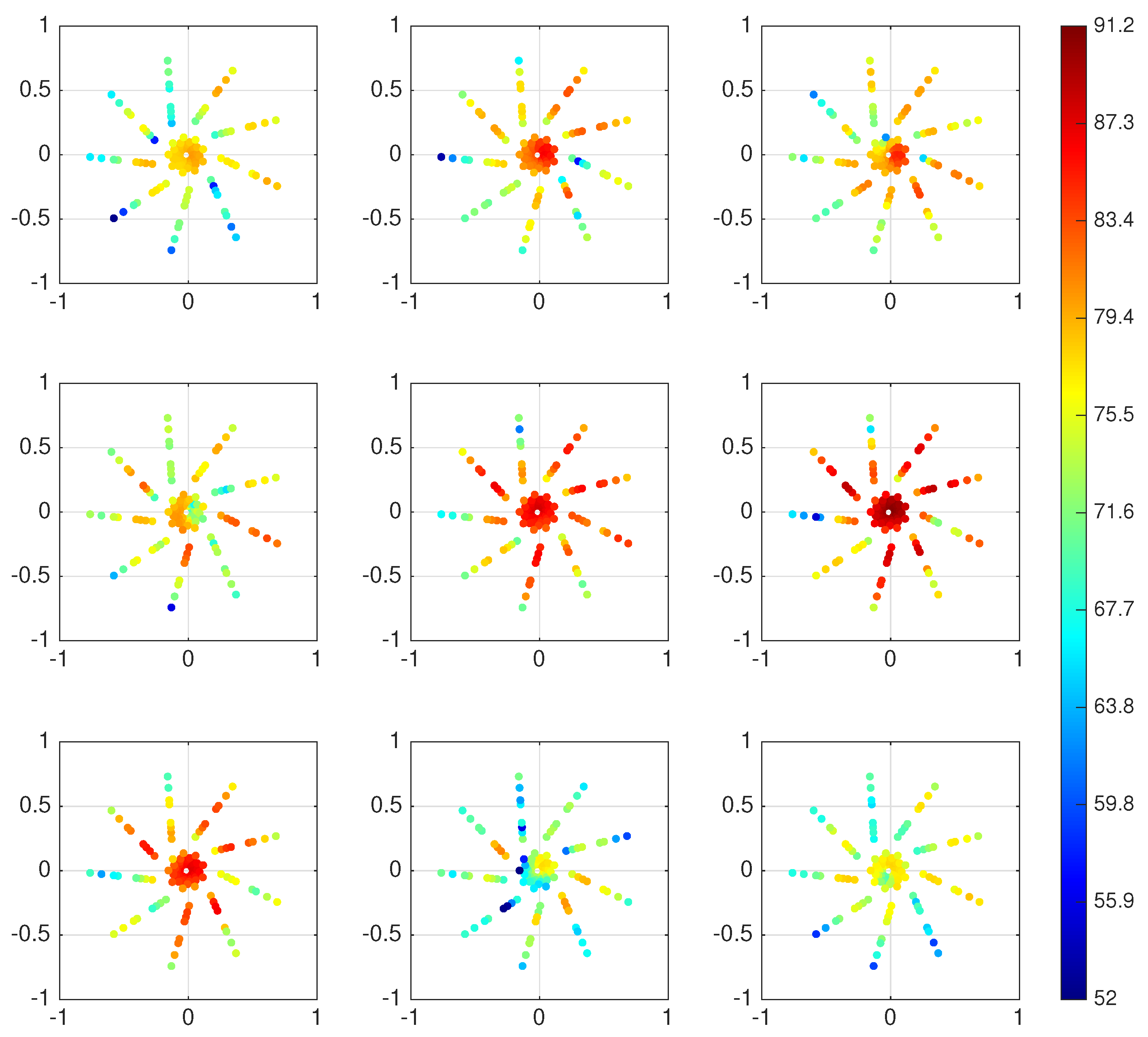


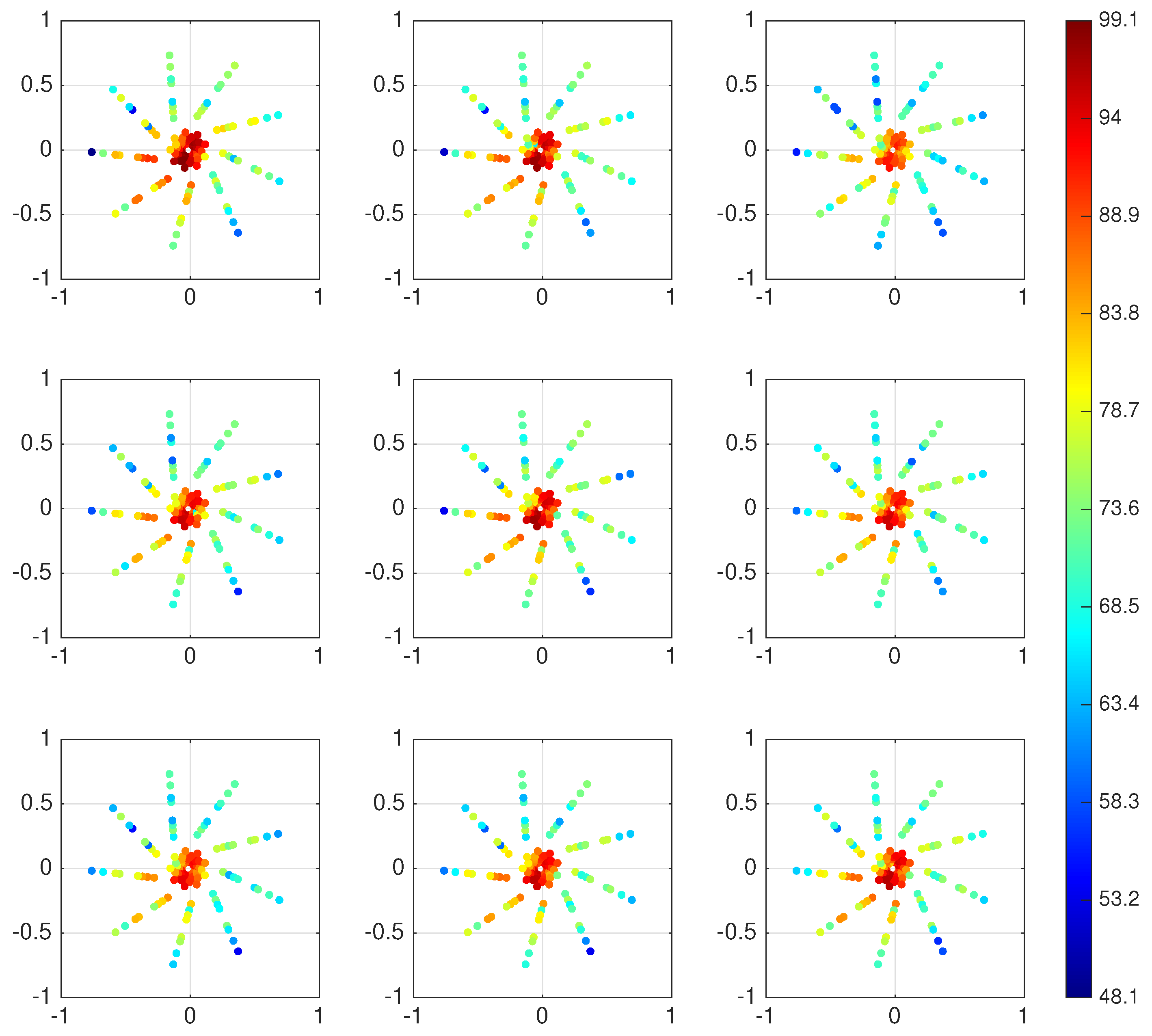

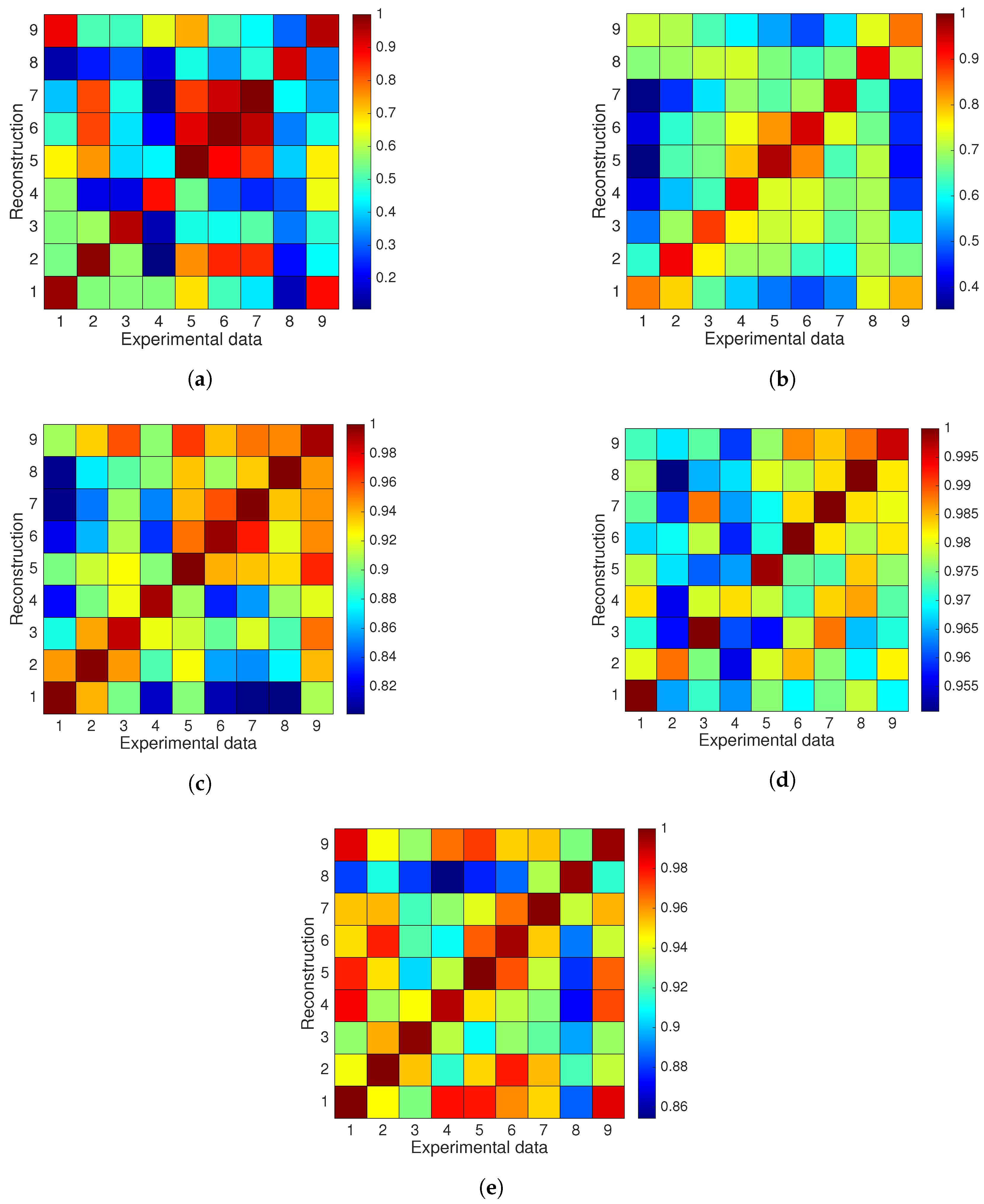

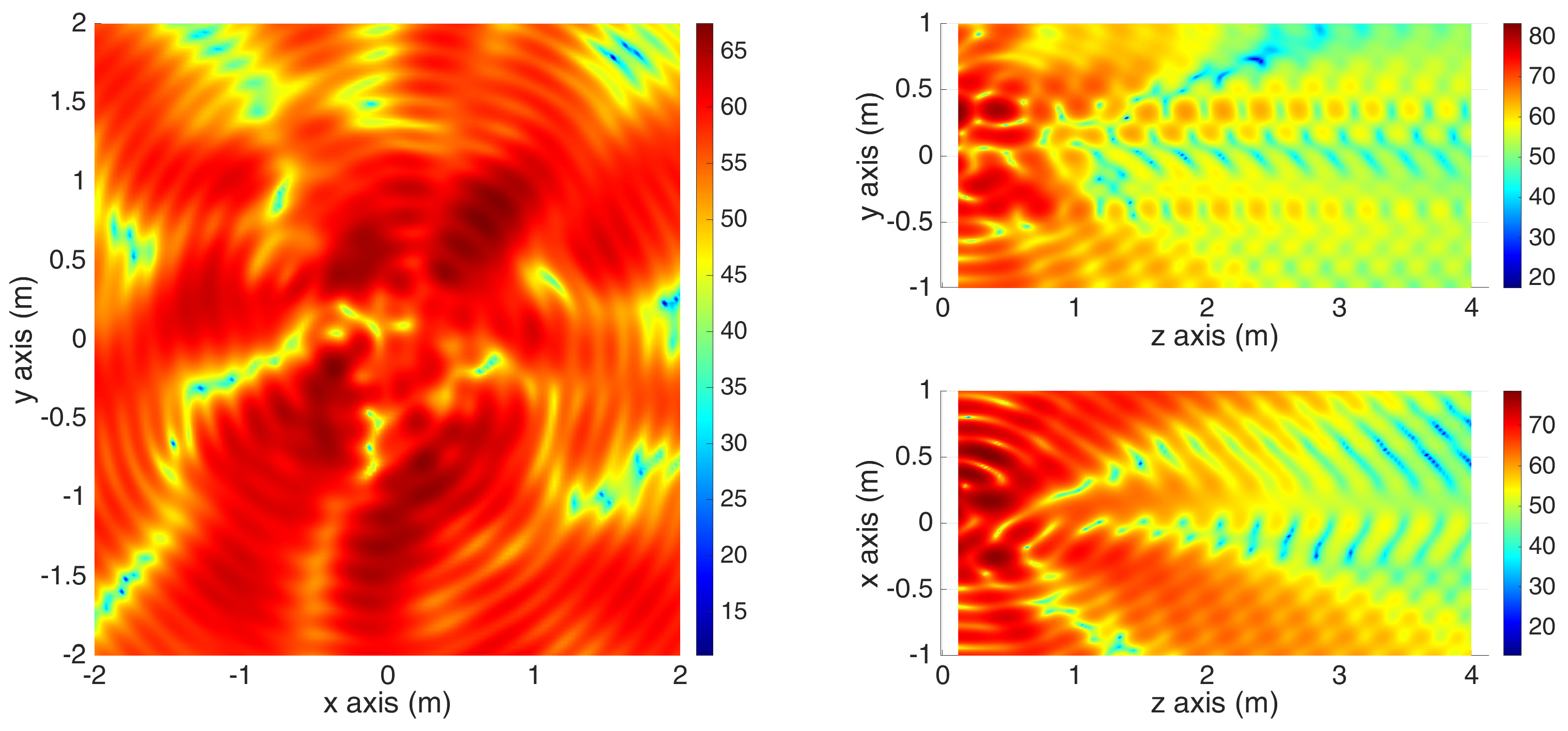
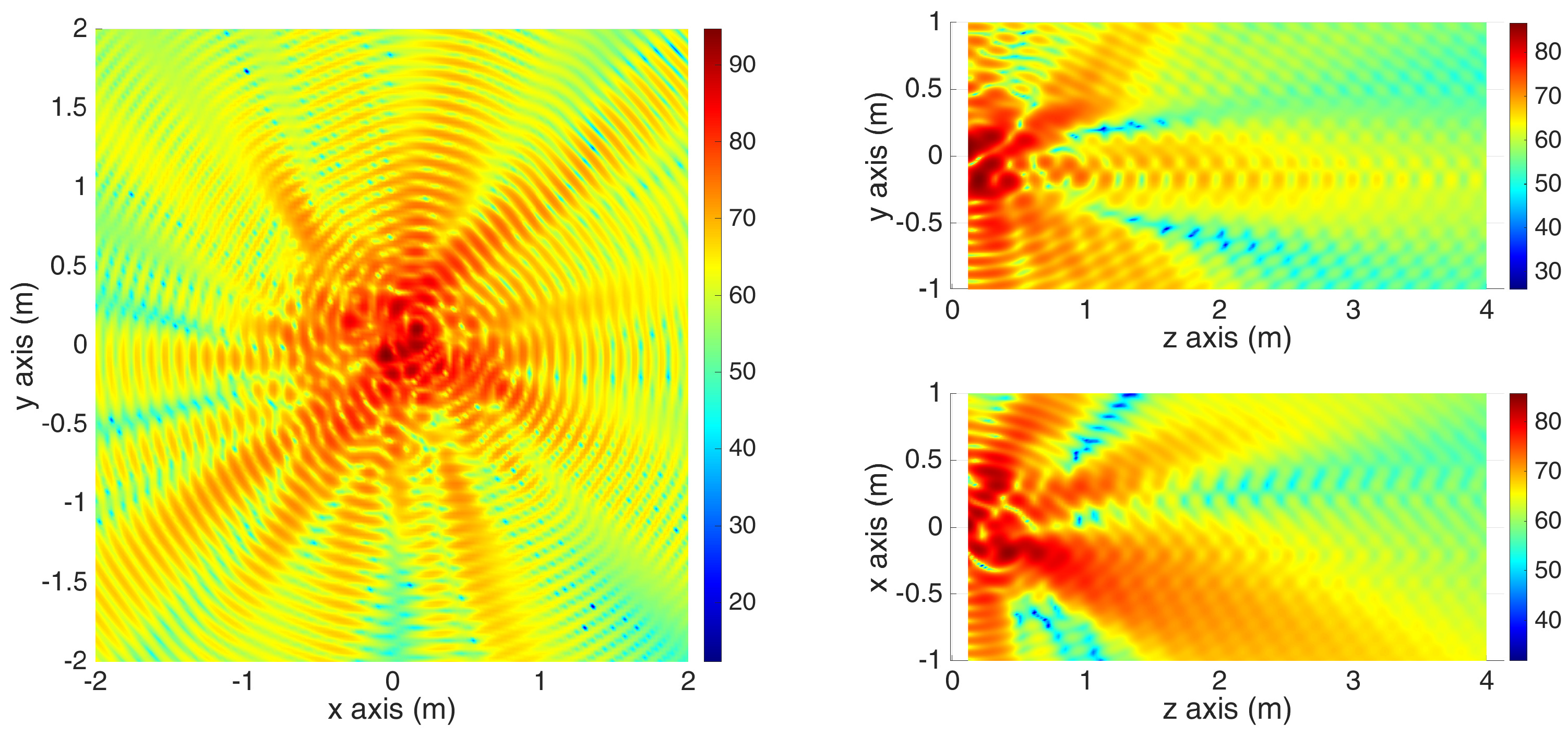
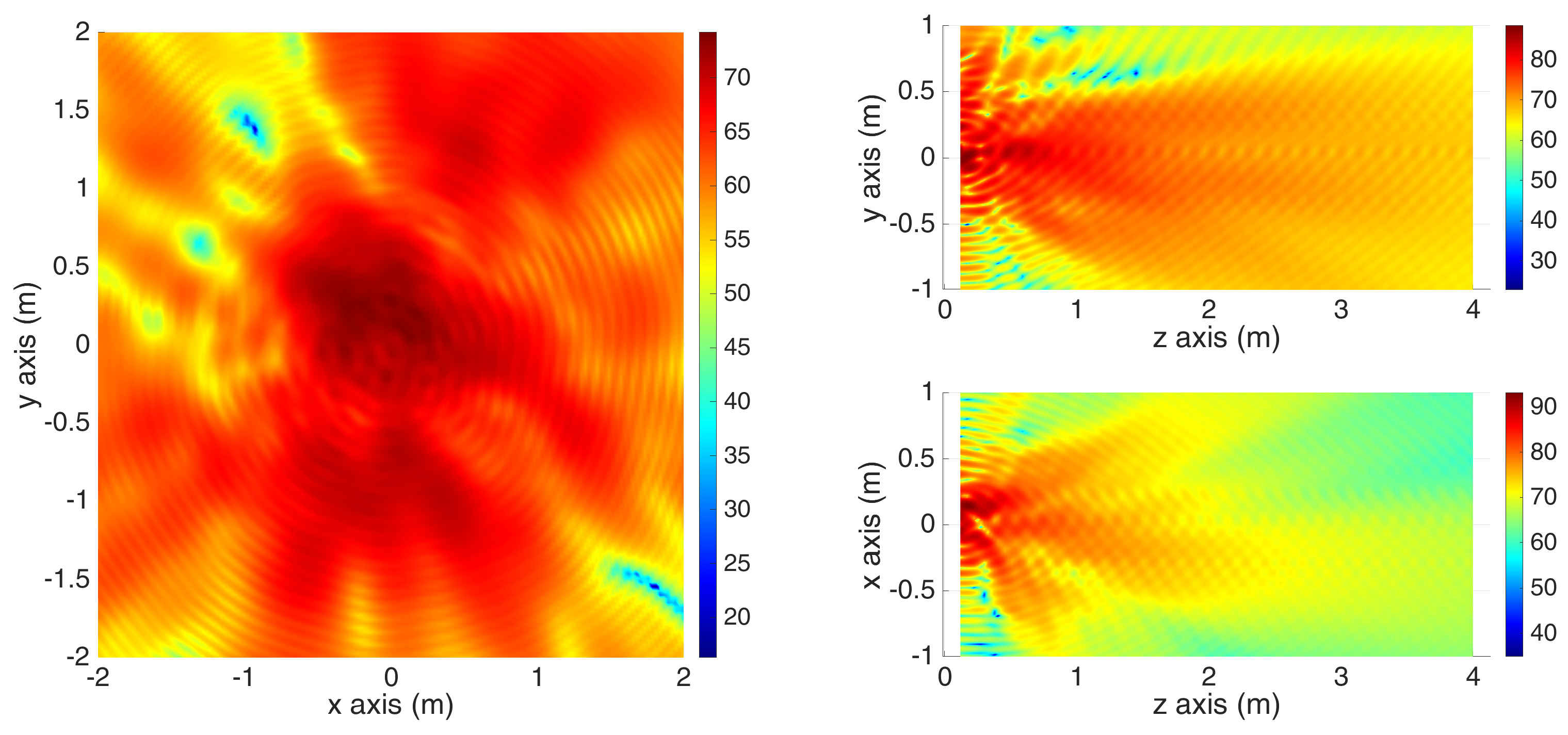
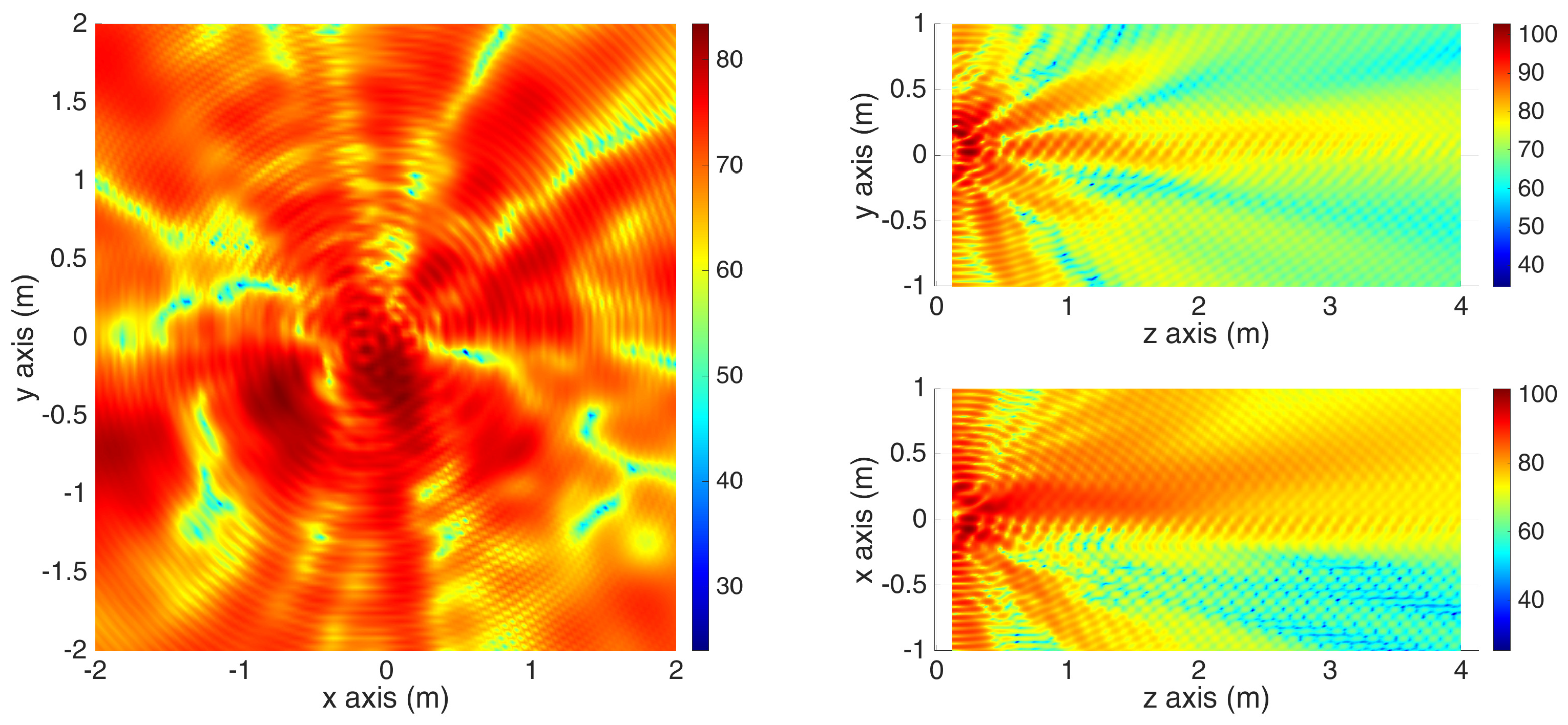
| Max sound level | 91.2 dB | 80.4 dB | 90.6 dB | 99.1 dB | 101.4 dB |
| Shape variation per disc revolution | yes | yes | no | no | no |
| Directivity | cf. figures and description in the body of the text. | ||||
| 0.85 | 0.8 | 0.99 | 0.98 | 0.99 | |
| 0.07 | 0.37 | 0.81 | 0.95 | 0.86 | |
| Evolution vs. time | very strong | strong | low | none | low |
Disclaimer/Publisher’s Note: The statements, opinions and data contained in all publications are solely those of the individual author(s) and contributor(s) and not of MDPI and/or the editor(s). MDPI and/or the editor(s) disclaim responsibility for any injury to people or property resulting from any ideas, methods, instructions or products referred to in the content. |
© 2023 by the authors. Licensee MDPI, Basel, Switzerland. This article is an open access article distributed under the terms and conditions of the Creative Commons Attribution (CC BY) license (https://creativecommons.org/licenses/by/4.0/).
Share and Cite
Besset, S.; Lenoir, D.; Sinou, J.-J. Brake Squeal Investigations Based on Acoustic Measurements Performed on the FIVE@ECL Experimental Test Bench. Appl. Sci. 2023, 13, 12246. https://doi.org/10.3390/app132212246
Besset S, Lenoir D, Sinou J-J. Brake Squeal Investigations Based on Acoustic Measurements Performed on the FIVE@ECL Experimental Test Bench. Applied Sciences. 2023; 13(22):12246. https://doi.org/10.3390/app132212246
Chicago/Turabian StyleBesset, Sebastien, David Lenoir, and Jean-Jacques Sinou. 2023. "Brake Squeal Investigations Based on Acoustic Measurements Performed on the FIVE@ECL Experimental Test Bench" Applied Sciences 13, no. 22: 12246. https://doi.org/10.3390/app132212246






